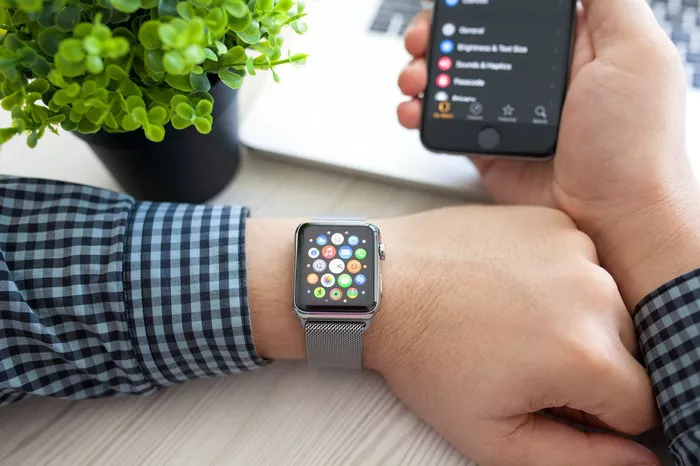The Apple Watch is more than just a timepiece; it’s a sophisticated device equipped with health and safety features designed to assist users in their daily lives. One of the most remarkable features is fall detection, which leverages advanced technology to enhance user safety.
Fall detection on Apple Watch uses the built-in accelerometer and gyroscope to monitor the user’s movements. This function can detect a sudden and rapid fall, recognizing a strong collision with the ground. Upon detecting a fall, the Apple Watch sends a notification to the user, asking if they need help. If the user does not respond within a set timeframe, the watch automatically calls the emergency services and sends a message to the user’s emergency contacts.
This feature is particularly valuable for older adults or those with health conditions that increase the risk of falls. It offers peace of mind, knowing that help is just a wrist movement away.
Steps to Turn On the Fall Detection Function
Activating fall detection on your Apple Watch is straightforward. Follow these steps to ensure that you’re protected:
Open the “Settings” app on your Apple Watch.
Navigate to the home screen of your Apple Watch and locate the “Settings” app, which is represented by a gear icon.
Scroll to “Emergency SOS” and tap.
In the “Settings” menu, scroll down until you find “Emergency SOS.” Tap on it to proceed.
Select “Fall Detection.”
Within the “Emergency SOS” menu, you will find an option labeled “Fall Detection.” Tap on this option.
Select “Turn On” to activate fall detection.
Once you’re in the “Fall Detection” menu, you will see a toggle switch. Tap on it to turn on the fall detection function.
These simple steps will enable the fall detection feature, ensuring your Apple Watch is ready to monitor for any sudden falls.
How the Fall Detection Function Works
The fall detection feature on the Apple Watch is a marvel of modern technology. It works by constantly analyzing the user’s movement patterns using the built-in accelerometer and gyroscope.
When the watch detects a sudden and rapid fall followed by a significant impact, it triggers an alert. Here’s a step-by-step breakdown of how it functions:
Movement Monitoring:
The accelerometer and gyroscope continuously monitor the user’s movement and orientation.
Fall Detection:
If a rapid descent and strong impact are detected, the watch assesses the situation to confirm it’s a fall.
Alert Notification:
Upon confirming a fall, the Apple Watch displays an alert, vibrating and sounding an alarm to grab the user’s attention.
User Response:
The alert offers options to call emergency services or dismiss the alert if the user is uninjured.
Automatic Emergency Call:
If the user doesn’t respond within a minute, the watch automatically calls emergency services and sends a message to the user’s emergency contacts with the location information.
Suggestions for Using the Fall Detection Function
For the fall detection feature to be effective, consider the following suggestions:
Proper Wear:
Ensure your Apple Watch is worn securely on your wrist. A loose watch might not accurately detect movements.
Regular Checks:
Periodically verify that the fall detection feature is enabled, especially after software updates or if you’ve reset your device.
Activity Considerations:
When engaging in activities like running or intense workouts that might trigger false alarms, you might choose to temporarily disable fall detection to prevent unnecessary emergency calls.
Keep Contacts Updated:
Make sure your emergency contacts’ information is current. This ensures that the right people are notified in the event of an emergency.
See Also: How To Turn On Apple Watch Location
FAQ
1. How much power does the fall detection function consume?
The fall detection feature does not significantly impact battery life. It’s designed to run efficiently in the background without draining your watch’s battery excessively.
2. How to turn off the fall detection function?
You can turn off fall detection by following the steps to enable it, but toggle the switch to the “off” position in the “Fall Detection” menu under “Emergency SOS” in the “Settings” app.
3. What is the accuracy of the fall detection function?
The fall detection feature is highly accurate, leveraging advanced sensors and algorithms. However, no system is perfect. There might be occasional false positives or missed falls, especially in activities with abrupt movements.
4. Can fall detection work without cellular service?
Yes, fall detection can work without cellular service, but having a cellular plan or a paired iPhone nearby enhances its ability to contact emergency services.
5. Is fall detection available on all Apple Watch models?
Fall detection is available on Apple Watch Series 4 and later models. Ensure your device is updated to the latest software version for the best performance.
6. Can fall detection work while swimming?
Fall detection is designed primarily for land-based activities. It may not function correctly during swimming or water-based activities due to the different motion patterns involved.
In conclusion, the fall detection feature on Apple Watch is an invaluable tool for enhancing personal safety. By understanding how it works, how to enable it, and following best practices, users can make the most out of this advanced technology.

